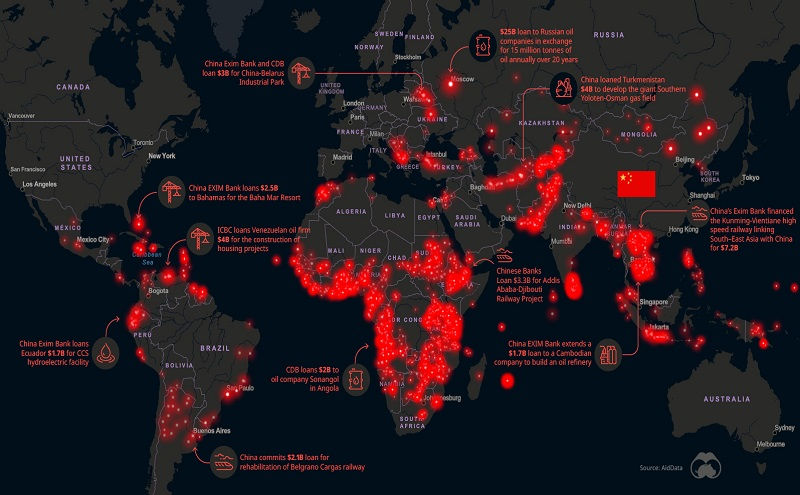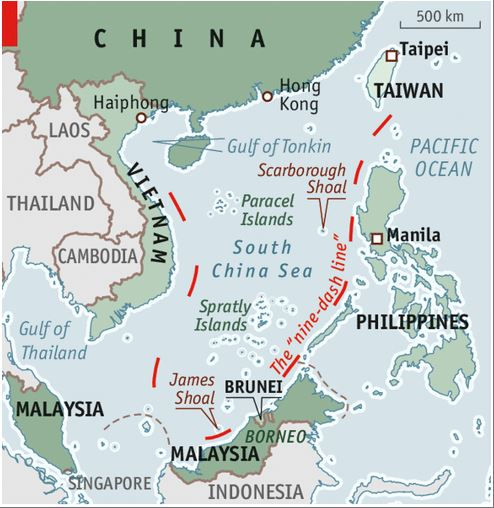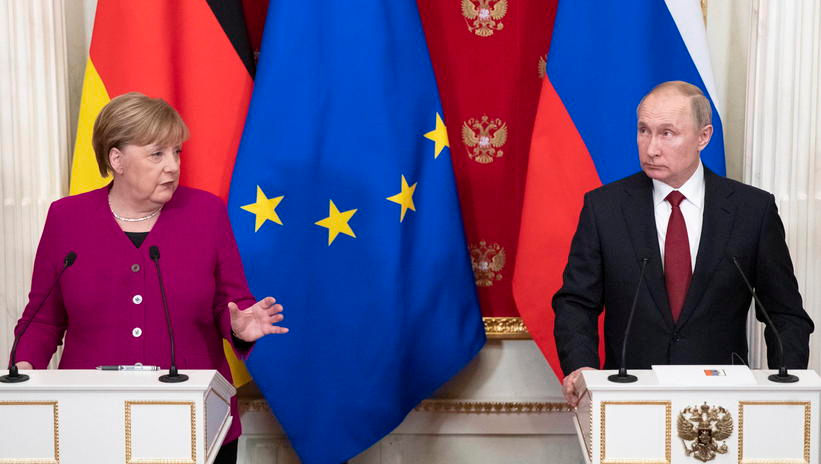Bed Time for Democracy: China's Quest for Global Supremacy
- Çağan Onataslan

- Apr 20, 2021
- 7 min read
The current geopolitical order of the world revolves around the West. Most of our educational institutions have a Eurocentric approach towards history. It is mostly taught that Europe is and always has been the geopolitical center of the world. Almost everything we learn in history classes – from the Roman Empire to the Middle Ages – is presented in the context of Europe and Europeans. However, there is a lot of insight to be gained if perspectives are shifted and world history is seen in a Eurasian context.
Ancient China was the world’s most efficient state. It had the world’s biggest labor pool, as well as a high demand for its products. This allowed Chinese products and trade to dominate most of the world’s economy. From India to Europe and even Africa, many states and empires would fight over the trade routes to China. The Sinocentric world order came to an end after a series of wars with the rising European powers, of which the most famous one is the Opium Wars. The Europeans who had embarked on the journey of exploration to obtain favorable trading opportunities with China had resorted to plundering and colonizing various nation-states, changing the geopolitical and economic world order. This period in history is usually remembered for the innovations and advancements in the Western world, and has adopted various names such as the Modern Age, the Space Age, or the Information Age. But for the Chinese it has a different name, “The Age of Humiliation”.[1] In my opinion, this is a crucial fact in understanding contemporary Chinese foreign policy.
China was at its lowest point after World War II. Despite having been the most technologically advanced nation for millennia, the state was now lacking basic technology. In addition to that, China had suffered the bloodiest rebellion of the 20th century, was invaded by the tyrannical Japanese Empire, and went through a horrendous civil war. That is why the world was astonished when China got back on its feet due to the reforms of Deng Xiaoping. His reforms adopted a capitalist economy with a communist social policy, famously known as "Socialism with Chinese Characteristic". Thanks to Deng, China became the world's factory. Additionally, China’s extreme poverty jumped from 90 percent in 1978 to 3% currently (going by the most cynical rates).[2] Furthermore, under Deng, China’s global strategy was "Observe calmly; secure our position; cope with affairs calmly; hide our capacities and bide our time; be good at maintaining a low profile, and never claim leadership."[3] Yet, this attitude would start to change in the 2010s. As a result of China’s one-child policy, their aging population could no longer sustain an export-driven, labor-intensive manufacturing economy so the country would either be stuck in a middle-income trap or innovate. In other words, China could no longer afford to be the world’s factory but it could take its shot at being the next superpower.
New Horizons
This demographic change coincided with Xi Jinping’s rise. He had recognized the failures and shortcomings of the Chinese Communist Party (CCP) and embarked on an anti-corruption campaign from 2012 onwards. Although this could be perceived as a positive change, the sheer size of the purge against corrupt officials called into question the purpose behind this reform. Many critics claim that this is the greatest political purge since Mao, as many of Xi’s enemies and powerful members of the CCP were dismissed while Xi consolidated his power.[4]
Additionally, Xi alongside his party put forward the idea of the “Chinese Dream”, which is vaguely framed as the “great revival of the Chinese nation”.[5] This is a nationalist statement referring to China becoming the dominant force in the world. To this end, the Chinese government announced many plans and initiatives that aim to replicate other dominant powers in history. They would invest in various deep-water ports worldwide in order to create economic zones of influence like the Dutch. They would lease important trade ports for decades – eerily similar to the way Britain gained Hong Kong – and would do so by offering loans to countries they couldn’t pay back, much as the USA did throughout the Cold War. By these methods, they would expand their economic influence without resorting to any military means.
China would find their partners in countries that were already being ignored by the West due to their human rights records or undemocratic regimes. These nations welcomed Chinese investment and influence. These countries represent markets that the Chinese industry could easily take over, leading them to fall into China’s political sphere of influence. The Belt and Road Initiative (BRI) is a perfect example of this. The BRI is a massive, international infrastructure plan that aims to revive the old Silk Road while simultaneously increasing Chinese economic influence. Since the 1950s, under the USA’s hegemony, democratization and adherence to human rights have been some of the key requirements to take part in global markets – but China is trying to change this. They are investing in countries like Belarus, Hungary, and Pakistan. Although there is nothing wrong with a country expanding its economic influence, China is aggressively promoting the idea that liberal democracy is an unnecessary and failed system, since this rhetoric is beneficial to the CCP. And even if we were to – with all our naivety – assume that this was pure coincidence, an internal confidential document of the Communist Party (Document Number Nine) would reveal their negative attitude towards free press and judiciary, and their paranoia towards what they call western values like liberalism or democracy that could weaken the ruling power of the party.[6] This difference in the understanding of rulership between democracies and China is polarizing the world in a way unseen since the Cold War. Yet, this time it isn’t about capitalism against communism, but about liberalism and Authoritarianism, and it is being fought on economic grounds.

Carrot & Stick
However, China’s economic soft power isn’t just limited to infrastructure development. By exercising control over Tibet, China owns the origin point of many rivers that sustain billions of people in places like Bangladesh, Myanmar, India, and Pakistan. As a part of its renewable energy program, China is increasingly damming these rivers and by doing so, gaining control of the water supply of these countries.[7] Although China claims that these dams aren’t being built to exert political influence in South East Asia, it is peculiar that the only river they haven’t dammed is the one leading to Pakistan, their regional ally. Furthermore, China is also claiming all of the South China Sea They use historical claims (dating from Ancient China) and the building of man-made islands with military bases to increase its exclusive economic zone, disputing those of the Philippines, Vietnam, and Indonesia. The situation is even more worrisome for Taiwan, as top US military officials believe China might invade Taiwan in 2027. This is because China has been stocking up on weapons, expanding its navy and drilling for amphibious operations. Due to the election of the nationalist party in Taiwan and the 2019 Hong Kong protests, China has lost its hopes for peaceful unification. Due to this Chinese air forces constantly fly close to Taiwanese air space,[8] while their navy goes through military drills simulating a takeover of Taiwan. Meanwhile in Hong Kong, the situation is similar as China tries to exert power over its legislation and judiciary while cracking down on protests with extreme brutality. They also subject their critics and protestors to public shaming, slowly eroding Hong Kong's freedoms and chances for independence by building bridges into the city.

The Human Cost
China doesn’t just pose a threat to foreigners since through its authoritarian rule it has developed a society based in fear and isolation. A society in which the status quo is maintained by harmony, and harmony is maintained through order and obedience to authority. In a society in which a social credit score is assigned to every citizen while constantly being monitored by CCTV. The level of surveillance and government intrusion is unimaginable. While most in the West cheered as China removed the statues of Marx and Lenin to replace them with those of Sun Tzu or Confucius, it is important to remember that these were the thinkers that shaped this mindset of maintaining harmony and order at all costs, and now they represent a resurging Chinese nationalism.
If you are reading this article in a comfortable democracy where Chinese political influence can’t reach you, the movies you watch (even those made in your country) are indirectly censored by China since movie producers are aware of the potential benefits of breaking into the Chinese market. Many companies in Hollywood now hire Chinese firms to help them get approved by the Chinese censors [9]. Since China has the biggest consumer class in the world, Chinese markets wield great soft power. Houston Rockets general manager, Daryl Morey, learned this the hard way when he expressed his support to the Hong Kong protests in a tweet. Although he quickly backed down from this statement and apologized, their activities in China had been suspended and their Chinese sponsors pulled their support. Among all its methods like military bases or debt diplomacy, this one is the most effective as it isn’t the result of state planning or deliberate policies but through market forces. Democratic nations preferring profits over principles makes them seem hypocritical, which plays perfectly into the hands of those that want to see that pesky democracy wiped from the world. China’s Age of Humiliation is over, but unless democratic nations can risk losing Chinese customers, an Age of Humiliation is upon democracy.
References
[1] Adcock Kaufman, Alison (2010). "The "Century of Humiliation," Then and Now: Chinese Perceptions of the International Order". Pacific Focus. 25 (1): 1–33.
[2] Allison, G., 2018. Is war between China and the US inevitable?. [online] Youtube.com. Available at: <https://www.youtube.com/watch?v=XewnyUJgyA4&t=626s&ab_channel=TED> [Accessed 19 April 2021]. [3] Pike, J. (n.d.). Deng Xiaoping’s "24-Character Strategy". Retrieved April 19, 2021, from https://www.globalsecurity.org/military/world/china/24-character.htm
[4] "China's former military chief of staff jailed for life for corruption". The Guardian. 20 February 2019. Archived from the original on 10 October 2019. Retrieved 19 April 2021.
[5] Chinese: 中华民族伟大复兴, which can also be translated as the "Great Renaissance of the Chinese nation" or the "Great revival of the Chinese people".
[6] Document 9: A ChinaFile Translation. (2015, October 30). Retrieved April 19, 2021, from https://www.chinafile.com/document-9-chinafile-translation
[7] CaspianReport. (2020, May 29). Retrieved April 19, 2021, from https://www.youtube.com/watch?v=CEo4NNo7oaM&ab_channel=CaspianReport
[8] BBC News. (Ed.). (2021, April 13). Taiwan: 'Record number' of China jets enter air zone. Retrieved April 19, 2021, from https://www.bbc.com/news/world-asia-56728072
[9] (2016, November 29). Retrieved April 19, 2021, from https://www.youtube.com/watch?v=8R-FQTY4KJk&ab_channel=Vox



Well